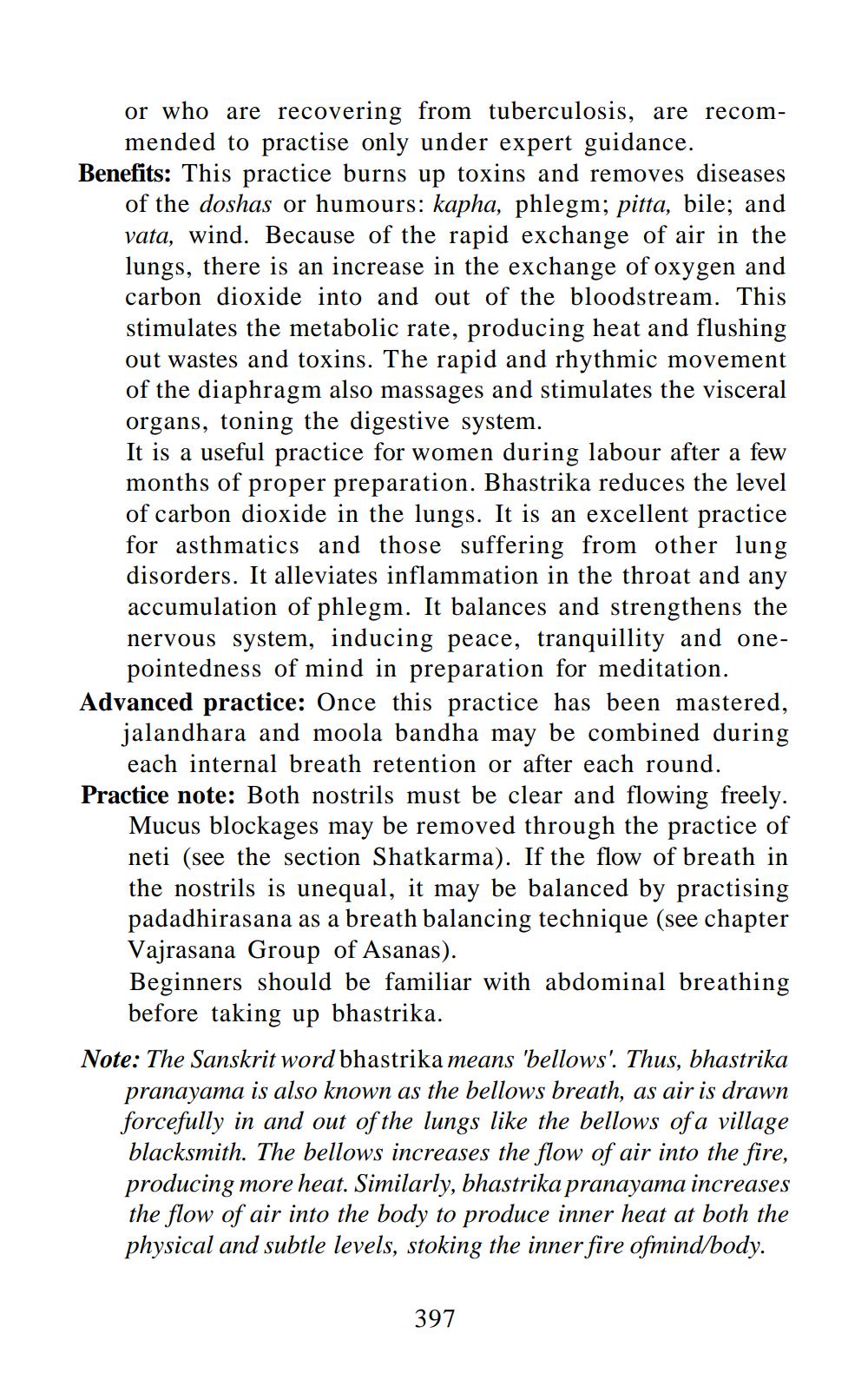________________
or who are recovering from tuberculosis, are recom
mended to practise only under expert guidance. Benefits: This practice burns up toxins and removes diseases
of the doshas or humours: kapha, phlegm; pitta, bile; and vata, wind. Because of the rapid exchange of air in the lungs, there is an increase in the exchange of oxygen and carbon dioxide into and out of the bloodstream. This stimulates the metabolic rate, producing heat and flushing out wastes and toxins. The rapid and rhythmic movement of the diaphragm also massages and stimulates the visceral organs, toning the digestive system. It is a useful practice for women during labour after a few months of proper preparation. Bhastrika reduces the level of carbon dioxide in the lungs. It is an excellent practice for asthmatics and those suffering from other lung disorders. It alleviates inflammation in the throat and any accumulation of phlegm. It balances and strengthens the nervous system, inducing peace, tranquillity and one
pointedness of mind in preparation for meditation. Advanced practice: Once this practice has been mastered,
jalandhara and moola bandha may be combined during
each internal breath retention or after each round. Practice note: Both nostrils must be clear and flowing freely.
Mucus blockages may be removed through the practice of neti (see the section Shatkarma). If the flow of breath in the nostrils is unequal, it may be balanced by practising padadhirasana as a breath balancing technique (see chapter Vajrasana Group of Asanas). Beginners should be familiar with abdominal breathing
before taking up bhastrika. Note: The Sanskrit word bhastrika means 'bellows'. Thus, bhastrika
pranayama is also known as the bellows breath, as air is drawn forcefully in and out of the lungs like the bellows of a village blacksmith. The bellows increases the flow of air into the fire, producing more heat. Similarly, bhastrika pranayama increases the flow of air into the body to produce inner heat at both the physical and subtle levels, stoking the inner fire ofmind/body.
397




